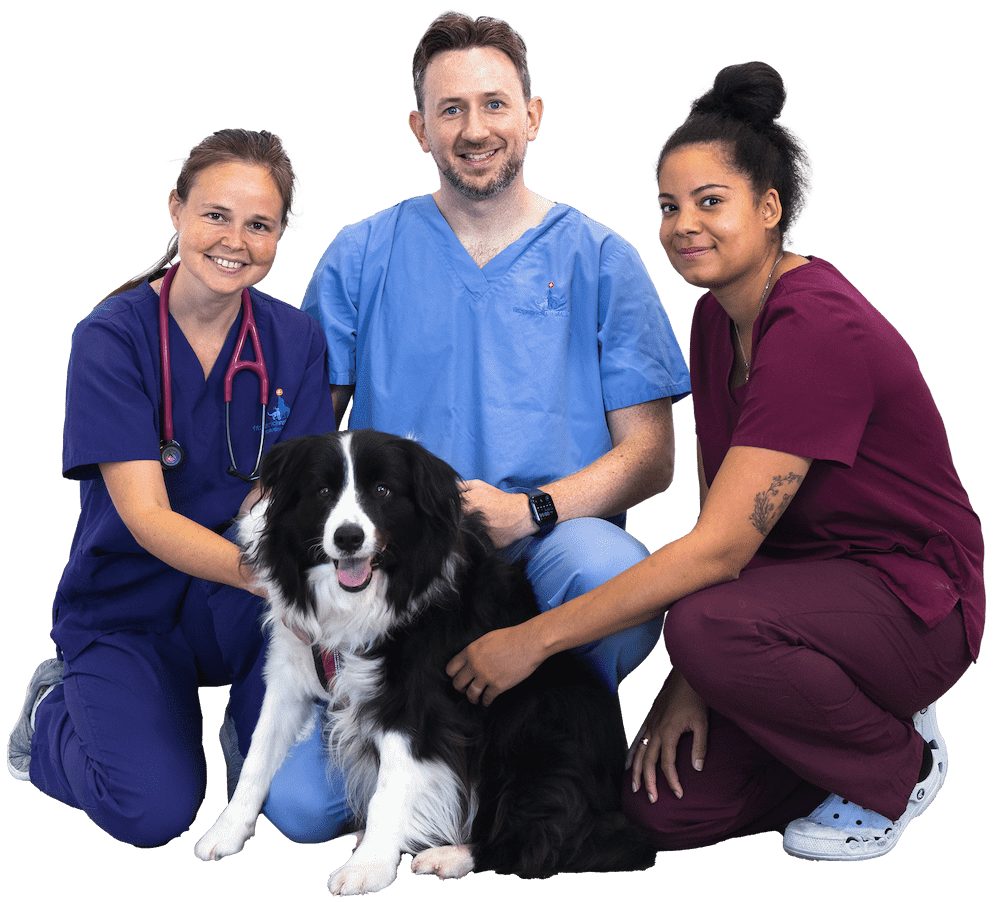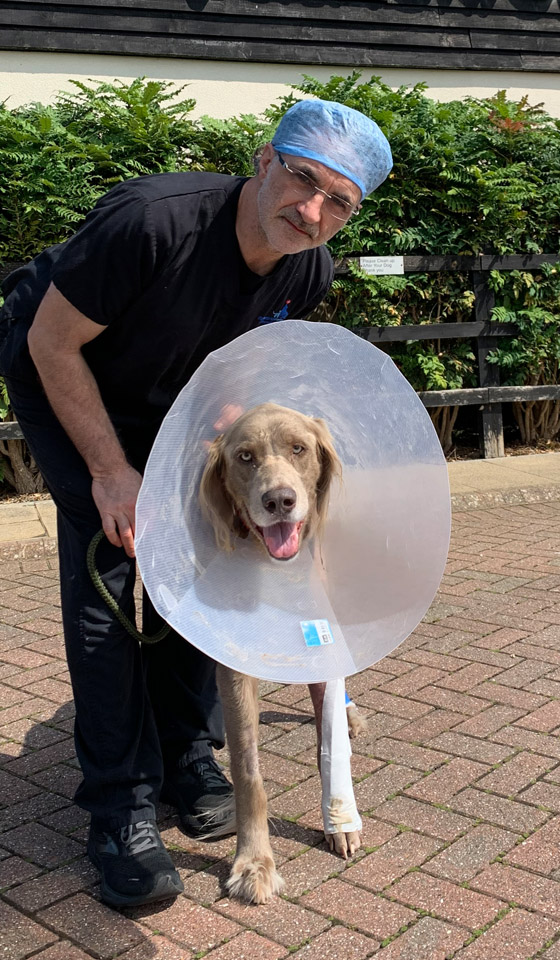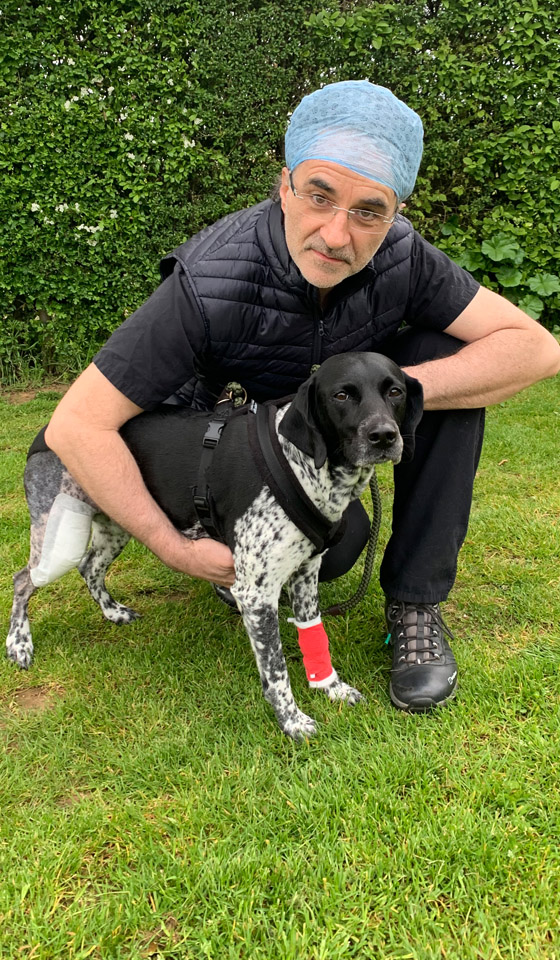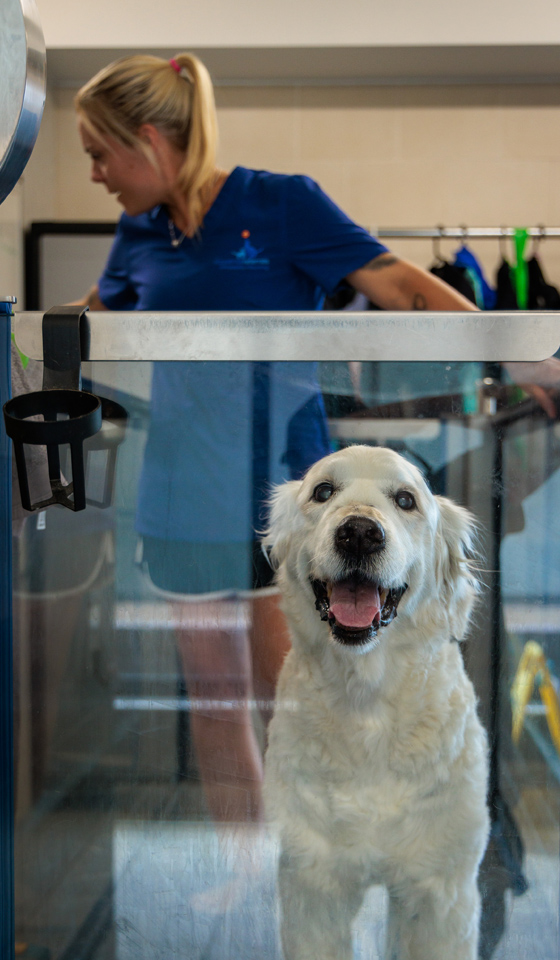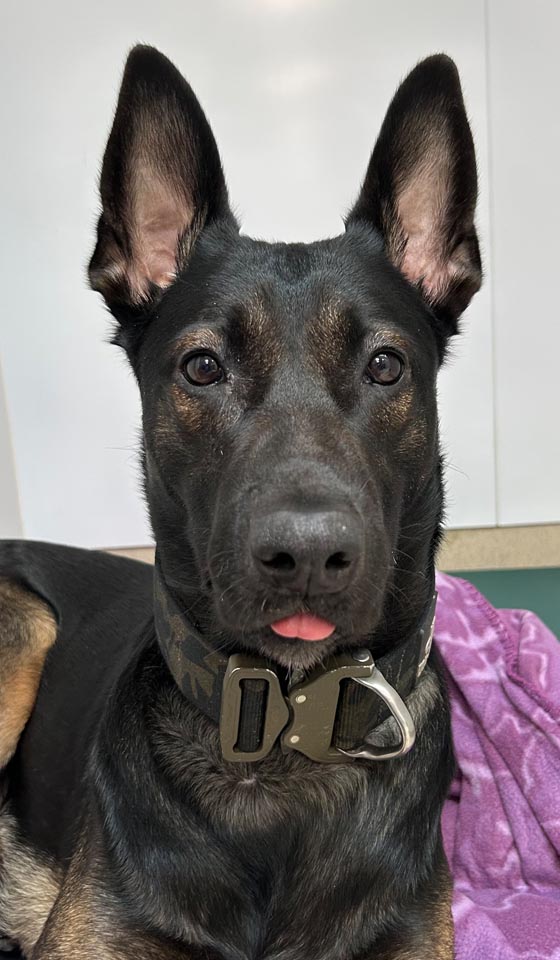What is an ununited anconeal process (UAP)?
Ununited anconeal process is a condition in which a bony protuberance within the elbow becomes detached from the ulna. This loose, bony fragment causes pain and lameness and contributes to articular damage within the elbow joint.
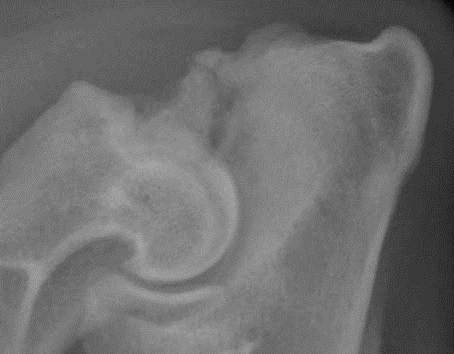
What causes UAP?
This condition is most commonly diagnosed in German Shepherd Dogs and Bernese Mountain Dogs. It is a consequence of elbow incongruity (such as ulnar notch incongruity or short ulna syndrome). In most dogs, this causes obvious lameness and pain. Achieving an optimal outcome depends on early diagnosis and treatment.
How is UAP diagnosed?
Ununited anconeal process is most commonly diagnosed using simple radiography. However, in some subtle cases where the anconeal process remains loosely attached, it is necessary to use computed topography (CT) to diagnose the condition.
How is UAP treated?
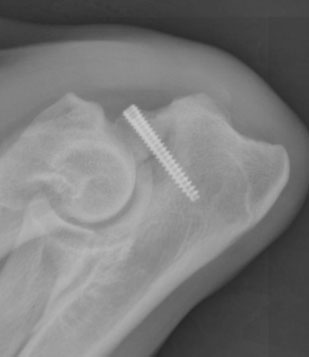
In dogs affected by ununited anconeal process (UAP), the best chance of achieving an excellent outcome is by early surgical intervention. Surgery can allow reattachment of the anconeal process but is only appropriate in dogs in which diagnosis is made early and where the loose anconeal process has not changed shape. In chronic cases of UAP where the fragment has changed shape, the most appropriate treatment is usually anconeal process removal. Fitzpatrick Referrals have employed a unique type of screw for anconeal process reattachment. This technique is combined with a proximal ulnar osteotomy (PUO) to allow the proximal ulna to move to a more favourable position relative to the humerus. In some select patients, PUO alone without a screw may be sufficient to allow the anconeal process to fuse to the ulna.
2 minute read
In this article


